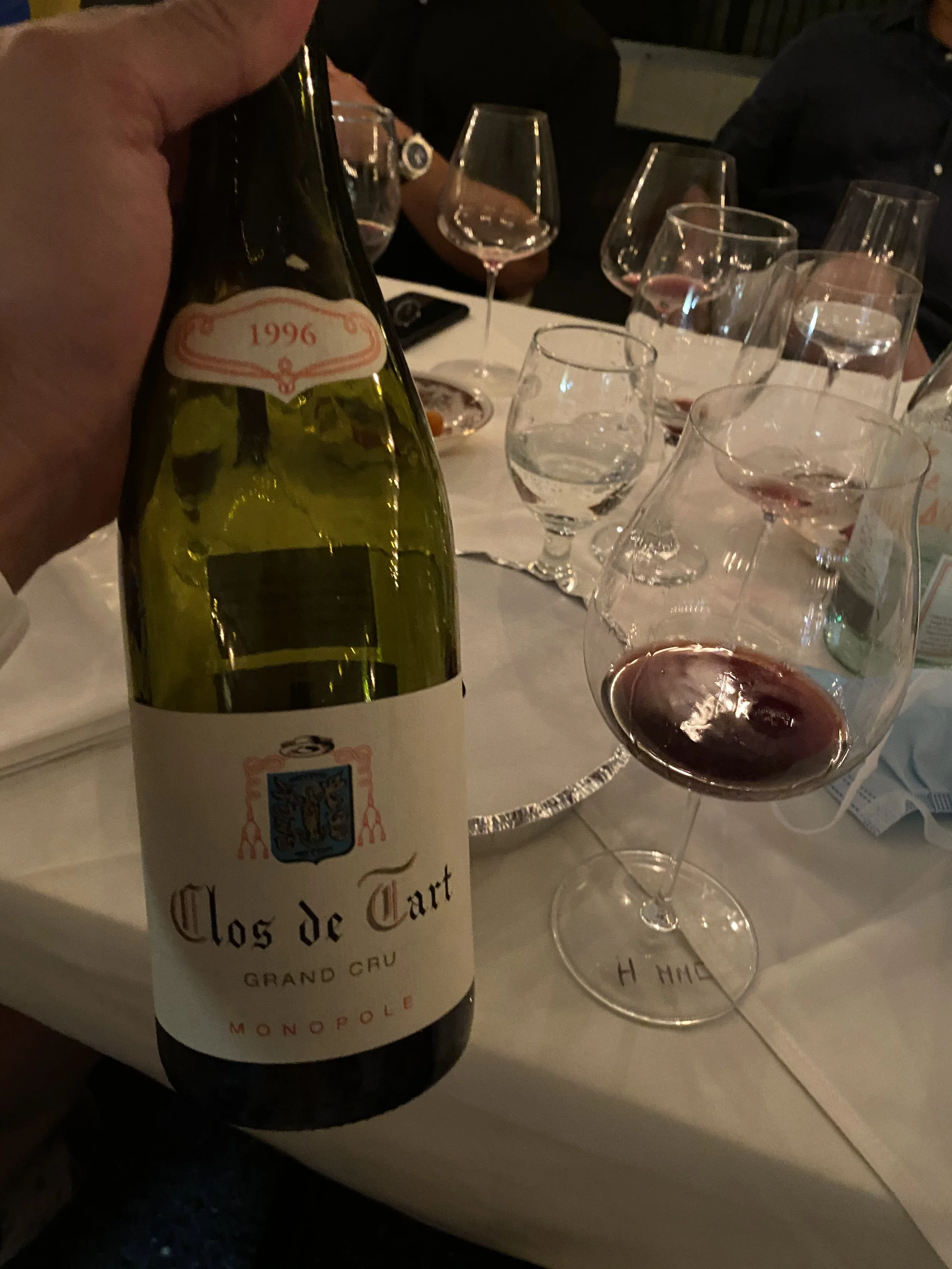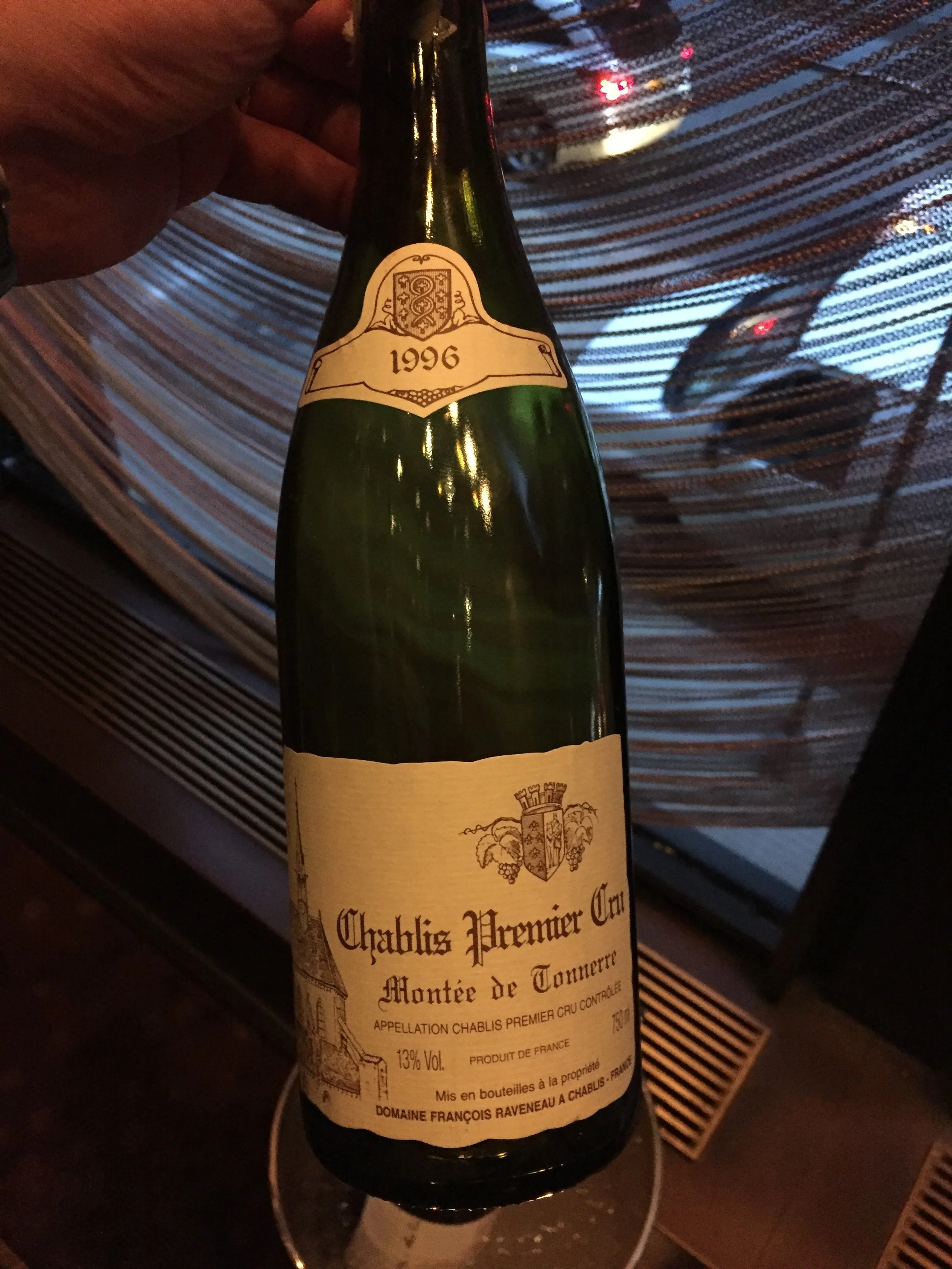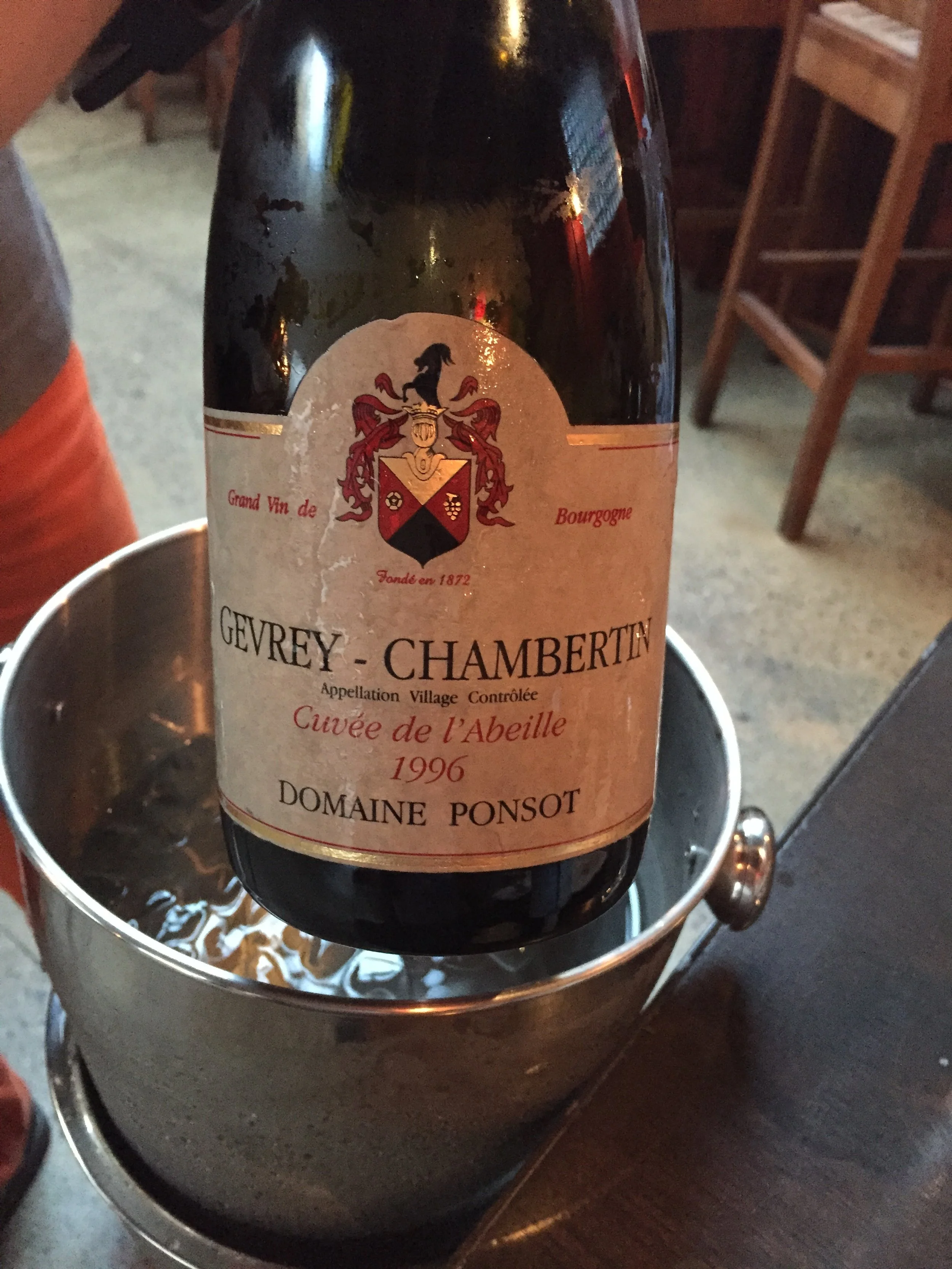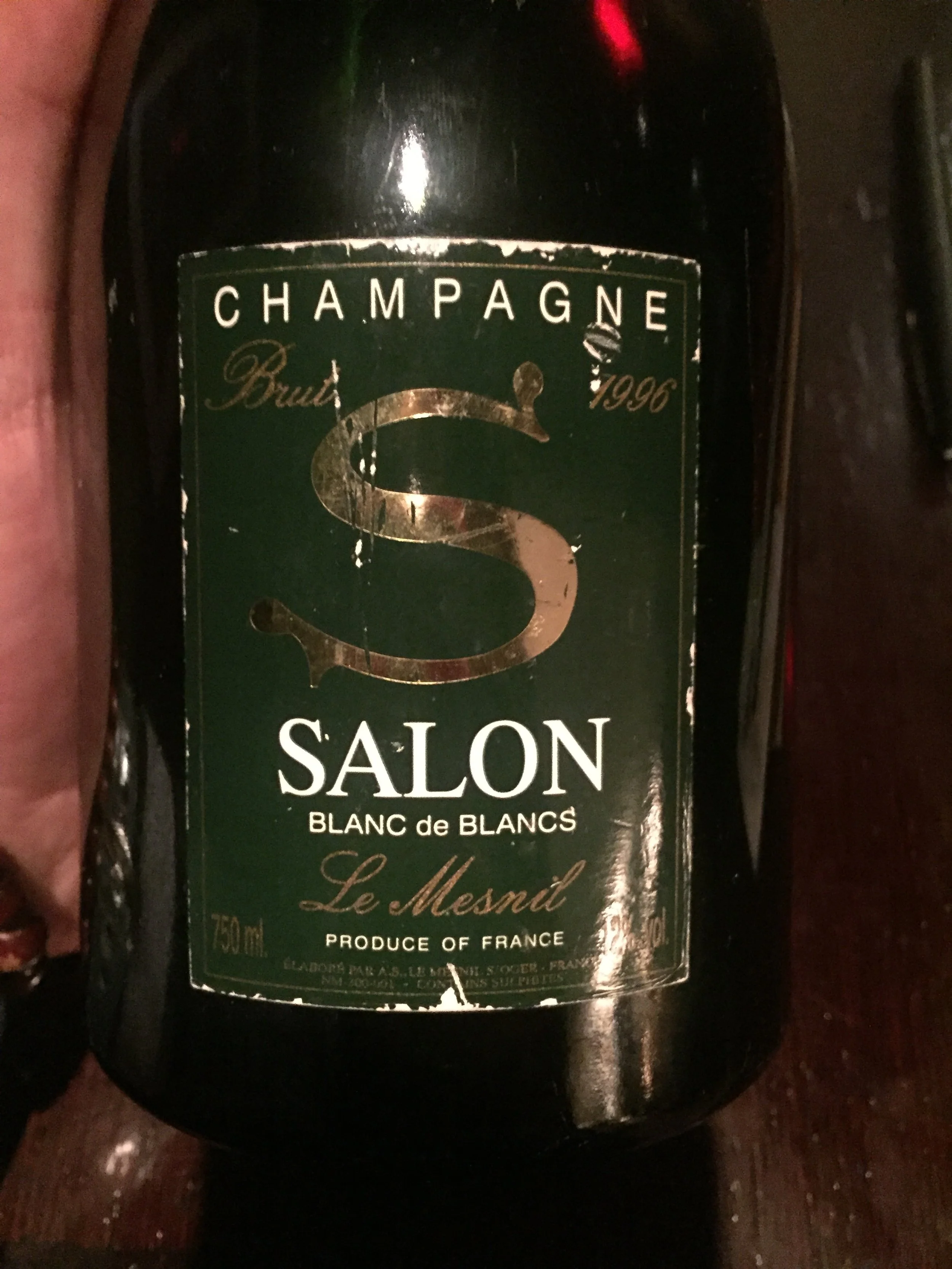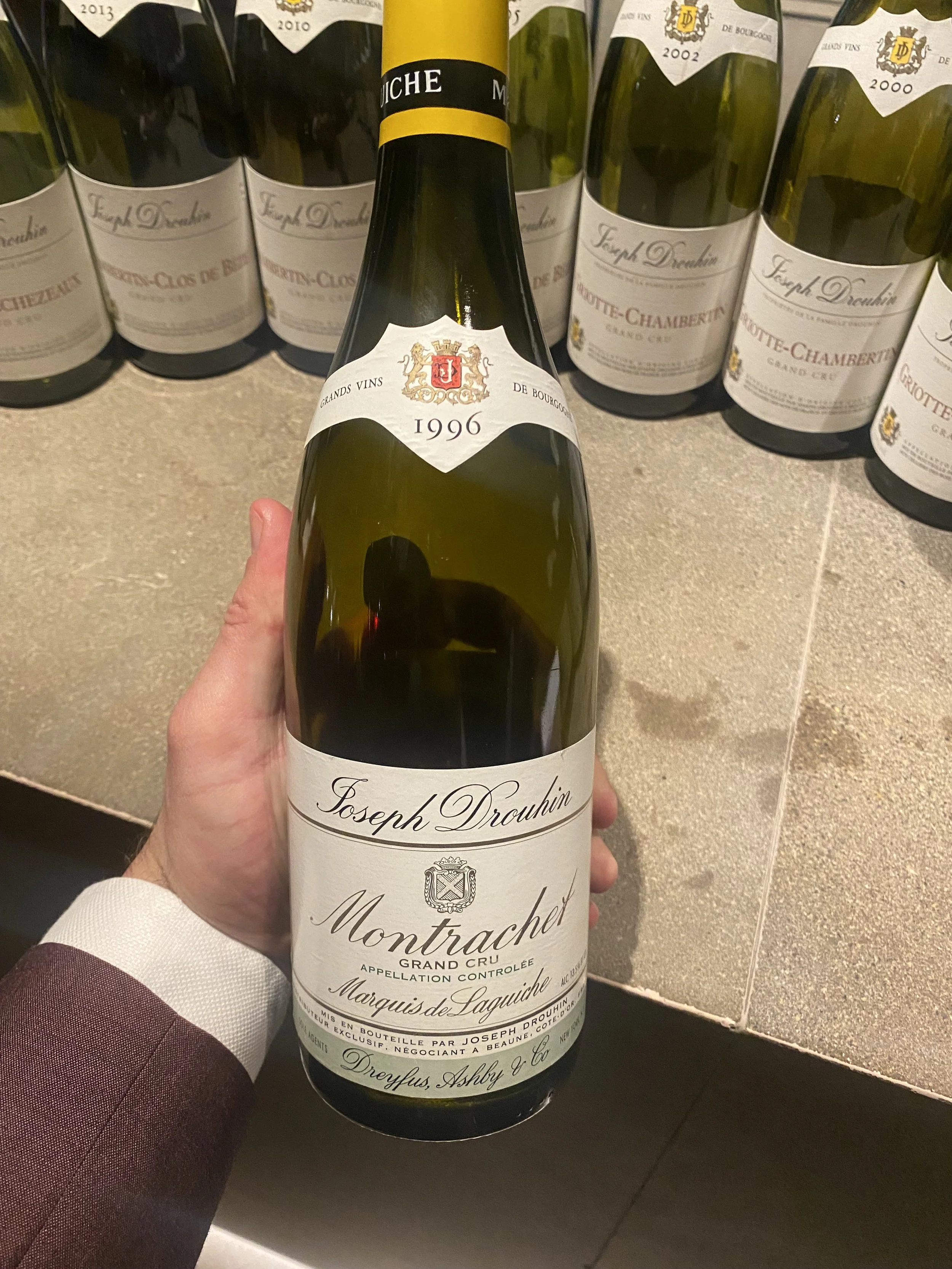1996 in champagne. what happened?
by Edouard Bourgeois
November 21, 2025
Ratings for 1996 often use words like "exceptional" and "grandiose," with some comparisons to 1928. What made 1996 objectively unique was the high average potential alcohol (10.3%) combined with high total acidity (10g/litre)—figures rarely seen together. As Charles Philipponnat noted, this is a significant jump from the 9.3% potential alcohol common forty years prior.
Acidity and potential alcohol work together for balance, but typically, when one is high, the other is low. In 1996, both figures were high. Bruno Paillard called it a 'naughty boy' vintage due to its unpredictable nature and the anxiety it caused producers while waiting for acidity levels to drop. However, the result for those with patience is "fantastic."
While acidity is key for aging, the true test is time. Over two decades later, the remaining 1996 bottles reveal which producers succeeded. The best examples are still complex and alluring, where the high acidity is balanced by a wide range of aromas, from brioche to stone fruit. Unfortunately, some other bottlings show only residual acidity, resulting in unbalanced and tart wines.
I recall opening a glorious bottle of 1996 Cristal for my son's birth seven years ago; the wine was still vibrant and charged.
Another fabulous example was made by Krug. As Olivier Krug said, "It’s a year where a good house or a good winemaker will make a good wine... It’s a tricky vintage." Other industry professionals have shared similar sentiments, noting that some vintners either opted out of making a vintage bottling or failed to achieve balance, resulting in wines that are already clumsy or tired.
The 1996 vintage often draws comparisons to its predecessor, 1995. These were the last two great Champagne vintages following the 1988, 1989, and 1990 trio. The 1996s are powerful wines; the best combine weight from ripeness with tension from acidity, providing the interest, complexity, and structure needed for long-term aging.
Interestingly, more houses released 1995 as a vintage Champagne than 1996, with a ratio of roughly 60% (1995) to 40% (1996).
Given its unpredictability, the safest bet for 1996 Champagne remains to go with producers you trust.
While looking for pictures of 1996 Champagne on my IPhone, I also found several other wines from various regions where the 1996 vintage truly shone, as seen in images below;jbgories
Pressoir.wine Dinner - Pierre Gonon recap
Pressoir.wine Dinner - Pierre Gonon recap
by Edouard
1/27/23
January 27, 2023
by Edouard Bourgeois
Jean Gonon was only twenty years old when he started making wine alongside his brother Pierre and their father Pierre. It was in 1986 and the two brothers released their first vintage together in 1988. Not much has changed at the estate since then. Jean focuses on the farming while his brother is the man in the cellar, but he is also managing the horses that plough the precious land.
Father Pierre started as a vigneron in 1956 although back then, wines of the northern Rhône were certainly not where they are today in terms of recognition, which explains why many farmers would prefer growing apricots or cherries rather than the labor-intensive grapes to make wines they were not sure would sell. So, until 1964, the Gonons would sell their grapes to local negociant Chapoutier to ensure revenue. Raymond Trollat, another highly respected vigneron in the area, started bottling his own wine earlier in the 1950’s, leading the way to daring emancipation. Others followed such as the Grippat family in the 1970’s.
But back to Gonon. I remember tasting my first bottle years ago. I was with a bunch of sommeliers on my day off from restaurant Daniel and someone opened this “simple vin de pays” called “Les Iles Ferays”. Talk about a “sommelier wine” … I couldn’t believe vin de pays could taste so good! As I found out later on, it turns out this bottling is quite rare with less than an hectare of vines planted and it comes from the flatter land, technically in Saint-Joseph, but Gonon prefers to bottle separately as vin de pays instead. That already tells a lot about the level of dedication from this family who saves the very best, hillside vineyard grapes to produce what Jean calls the real Saint-Joseph. It needs to be said, the appellation Saint Joseph has an issue. It started as a mere one hundred of hectares spread around 10 villages on these hillside vineyards where granite reigns supreme along with gneiss. But in the early 1970’s, political decisions led to expand the appellation area stretching it all the way north by Côte-Rôtie, not only spanning many different micro-climates but also including the flat lands as part of the appellation. The result was inevitable. Today Saint-Joseph doesn’t mean much in terms of quality and unfortunately, consumers can easily be disappointed. Gonon’s Saint Joseph is always made from grapes grown in the initial designated area of the appellation, indisputably the best vineyards.
When you ask the very affable Jean Gonon the simple question “what do you do to make such good wine?” he quietly answers that the wine is made in the vineyard, not at the winery. Sure, you hear that answer often, but when I saw the vineyard workers came back from their long day in the field as I exited the three and a half hour long tasting, I understood. Although they seem joyful and glad to be done with their daily work as the sun went down, these courageous people look like they had run a trail marathon! It is no easy task to work on the steep incline, but it pays off. Only selection massale is used in the vineyard so the best performing vines are used. These vigorous plants respond better to the terroir for example by avoiding over ripeness. The same cannot be said about the cloned vines largely used in the area by the majority of producers in the area.
At the winery, at least 80% of whole cluster is used. New oak is not used and Jean describes the winemaking as “simple”, what we know as “non-interventionist”.
The farming has been organic since 2004 although certified only nine years later.
The wines were incredible last night and as usual, I started writing tasting notes going through the deep vintage vertical. But after writing “wow!” “amazing!” “pure” or “deep” for most wines, I figured it was pointless to continue. Sometimes there is not much to say when you’re so close to perfection. One particularity about superior wines like those of Gonon is that they amaze me whether they are in their adolescent stage or with more bottle age. Their irresistible charm is consistent no matter the vintage or the age, a trait that I find is rarely seen.
My conservative notes below. Note: all the wines were double decanted two hours prior.
Domaine Pierre Gonon, Saint Joseph Les Oliviers Blanc 2019
Domaine Pierre Gonon, Saint Joseph Les Oliviers Blanc 2016
Les Oliviers is a tiny vineyard, not planted on granite. Mostly clay is seen there and Marsanne is king. The richer soil produces a generous wine with low acidity. The wine is fermented in oak and stays on its lees for a year with a few lees stirring the first months.
Domaine Pierre Gonon, Saint Joseph 2017
Excellent quality of fruit.
Domaine Pierre Gonon, Saint Joseph 2016
Amazing length and the brininess starts to show black olives.
Domaine Pierre Gonon, Saint Joseph 2015
Flamboyant! The exceptional quality of the vintage paired with the expert craft of Gonon is a marriage made in heaven.
Domaine Pierre Gonon, Saint Joseph 2014
2014 is known for its « greenness » in Burgundy but also in the northern Rhône. There was a touch of that here at the opening but it magically disappeared after aeration. Although tannins could be felt. Patience should reward the taster.
Domaine Pierre Gonon, Saint Joseph 2013
A deep wine. incredible
Domaine Pierre Gonon, Saint Joseph 2012
2012 reminds Jean Gonon of a vintage of the past, with a lighter, elegant body. It was a rainy year that produced less ripeness and less concentrate wines. The tasting confirmed that with a wine that is a bit thinner, not a fault by any means.
Domaine Pierre Gonon, Saint Joseph 2011
Juicy and vibrant! I have one bottle left at home and I will surely be saving it for the right occasion!
Domaine Pierre Gonon, Saint Joseph 2010
The tannic structure felt tighter here. A bit more austere with some bitterness. Like the 2014, a few more years should polish off the hard edges.
Domaine Pierre Gonon, Saint Joseph 2009
The fruit is more exuberant and lovely. Saying it was my favorite doesn’t mean much in this lineup, but I REALLY liked it!
Domaine Pierre Gonon, Saint Joseph 2007
I was amazed by the youthfulness. It is delicious now and I feel confident it will continue to amaze the drinkers for decades to come
Podcast "The Northern Rhône with Mannie Berk & Rajat Parr"
Raj Vaidya
6/23/2022
Part 3, Hermitage
I’ve had the Northern Rhône on my mind of late, partly because of some special time spent there in April and also because I’m getting excited about hosting our next Sommelier Scholarship Fund trip back to the region in a few weeks, where I’ll have the pleasure of introducing the region to four scholars who will travel with me to learn the nuances of the region. I took this current infatuation as an excuse to tap into two of the great minds and palates I know of when it comes to the region: Mannie Berk, the proprietor of the Rare Wine Company and Rajat Parr, former sommelier turned vigneron in California. We had a lovely chat about the various red wine appellations which I’ve split up into digestible segments for you to listen to at your leisure. Hope you enjoy listening in, they are truly some of the most knowledgable and experienced minds in the business.
-Raj
Podcast "The Northern Rhône with Mannie Berk & Rajat Parr"
Raj Vaidya
6/30/2022
Part 4, Crozes-Hermitage & Cornas
I’ve had the Northern Rhône on my mind of late, partly because of some special time spent there in April and also because i’m getting excited about hosting our next Sommelier Scholarship Fund trip back to the region in a few weeks, where i’ll have the pleasure of introducing the region to 4 scholars who will travel with me to learn the nuances of the region. I took this current infatuation as an excuse to tap into two of the great minds and palates I know of when it comes to the region, Mannie Berk, the proprietor of the Rare Wine Company and Rajat Parr, former sommelier turned vigneron in California. We had a lovely chat about the various red wine appellations which i’ve split up into digestible segments for you to listen to at your leisure. Hope you enjoy listening in, they are truly some of the most knowledgable and experienced minds in the business.
-Raj
Podcast "The Northern Rhône with Mannie Berk & Rajat Parr"
Raj Vaidya
6/15/2022
Part 2, Saint-Joseph
I’ve had the Northern Rhône on my mind of late, partly because of some special time spent there in April and also because i’m getting excited about hosting our next Sommelier Scholarship Fund trip back to the region in a few weeks, where I’ll have the pleasure of introducing the region to 4 scholars who will travel with me to learn the nuances of the region. I took this current infatuation as an excuse to tap into two of the great minds and palates I know of when it comes to the region: Mannie Berk, the proprietor of the Rare Wine Company and Rajat Parr, former sommelier turned vigneron in California. We had a lovely chat about the various red wine appellations which I’ve split up into digestible segments for you to listen to at your leisure. Hope you enjoy listening in, they are truly some of the most knowledgeable and experienced minds in the business.
-Raj
Podcast "The Northern Rhône with Mannie Berk & Rajat Parr"
Raj Vaidya
6/9/2022
Part 1, Côte-Rôtie
I’ve had the Northern Rhône on my mind of late, partly because of some special time spent there in April and also because i’m getting excited about hosting our next Sommelier Scholarship Fund trip back to the region in a few weeks, where i’ll have the pleasure of introducing the region to 4 scholars who will travel with me to learn the nuances of the region. I took this current infatuation as an excuse to tap into two of the great minds and palates I know of when it comes to the region, Mannie Berk, the proprietor of the Rare Wine Company and Rajat Parr, former sommelier turned vigneron in California. We had a lovely chat about the various red wine appellations which i’ve split up into digestible segments for you to listen to at your leisure. Hope you enjoy listening in, they are truly some of the most knowledgable and experienced minds in the business.
-Raj
What's Pressoir Drinking
May 4, 2022
by Justine Puaud
The Terroir of Seyssuel
Last weekend, I drove south to Ampuis for the weekend. I went for the first time to the Marché d’Ampuis. Over 65 wineries were there to represent the Northern Rhône appellations and opened 300 different wines from Côte-Rôtie, Condrieu, Saint-Joseph, Cornas, Hermitage, Saint-Péray and Crozes-Hermitage. It was nice to see some familiar faces of La Tablée like Alexis and Michael Gerin, Guillaume Clusel, Nicolas Champagneux and Yves Gangloff. I also tried some wines I have never heard of before like the wines from Seyssuel.
The history and more precisely the renaissance of the terroir of Seyssuel starts with a group of wine grower friends - Pierre Gaillard, Yves Cuilleron et François Villard - who, each time they went up from Ampuis to Lyon, were intrigued by these fallow hillsides along the highway. They had the intuition that the fields could be beautiful terroirs. They were right. If we go back to the colonization of La Gaule, the Romans identified some beautiful terroirs on which they had planted vines. This tradition continued for many centuries. But unfortunately, as in many other regions, in 1883, phylloxera got the better of the few hundred hectares of vines and the vineyards were completely forgotten.
Pierre Gaillard, Yves Cuilleron and François Villard, young producers in Saint-Joseph and Côte-Rôtie at that time, decided to push their investigations further. They found traces of the disappeared vineyard in old writings, carried out soil analyses and ended up realizing the facts: they had got their hands on a very beautiful schist terroir, identical to that of the Côte Brune d'Ampuis in Côte-Rôtie, on the other side of the Rhône, facing south. This time, they were sure of it: this vineyard had to be revived. They created Les Vins de Vienne and planted 11 hectares of vines: 9.5 in Syrah and 1.5 in Viognier. The first grapes were harvested in 1998.
I heard about this great story while I was having a glass of the cuvée KĀMAKA from Domaine Graeme and Julie Bott at Les Epicurieux in Ampuis. We met Graeme at La Tablée in early January. He is a talented winemaker who moved from New Zealand to France to work for Stephane Ogier as his Chef de Cave. He then met Julie at Domaine Ogier and a few years later they started to make their own wines. KĀMAKA (meaning in Māori the rock) is produced on the exceptional terroir located in Seyssuel. A real wine made from rocks, all vines were planted by hand with the help of a metal bar in rough mica schist rocks. It is 100% Syrah.
This vineyard is in the process of obtaining a protected appellation of origin (AOP), it should integrate the family of Côtes du Rhône, then become a Cru. The application is being studied at the INAO…
News from the Vineyard; Exploring Côte-Rôtie
A few thoughts on some of the most famed Syrah vineyards in the world…
by Raj Vaidya
April 26th, 2022
I had the opportunity to visit the Northern Rhône Valley last week along with Daniel and our friend, sommelier Matthew Conway, and after the visit to taste a full range of verticals at Clusel-Roch (see Daniel’s post from the last newsletter) I decided I wanted to spend a little more time exploring the wines and the terroir here.
The first matter that strikes one as they arrive in Ampuis is how extreme the slope of the hill is. Often rising up to a gradient of as much as 40%, this creates the sun exposure (thanks to the Southern aspect) that gives the appellation its moniker of the ‘roasted slope’. The picture below gives you some sense of the steepness from the bottom of Guigal’s La Turque vineyard.
It struck me that such steep terrain has a huge impact on viticultural techniques. For example, when vignerons are ploughing their soil to increase aeration and remove weeds, they have to be connected by wire to a winch system at the top of their vineyard so that they don’t tumble down the hill. This also has to be work done by hand, as there is no way of driving a tractor up (or down) the hill safely. It is likely for this reason that many farmers in the appellation do not practice organic farming, and prefer instead to use herbicides to manage the weeds. This of course causes poorly aerated soils and contribute to erosion of the already meager topsoil. There are some producers who are working organically though, and many more in conversion, which is a promising sign. You can see how Pierre Rostaing is reintroducing organic matter in his extremely steep Côte Brune vineyard.
Another feature to farming in these steep parcels is the frequent use of terracing to make the work easier (i.e. making it easier to stand and work in the vines.) You see this a lot in the southern section of the appellation, as illustrated below in pictures of the Tupin area.
In the coming weeks I’ll share a couple of additional thoughts about the region so be sure to check in on the newsletter next week to gain some further insight on farming in Côte Rôtie!





